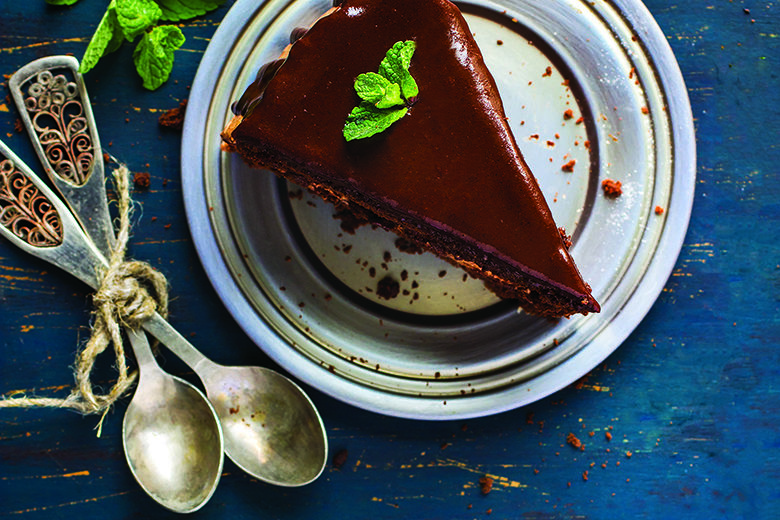
Baking is more than just a holiday tradition — it is food science and chemistry in action. Whether you follow a vegan diet, need to accommodate an egg or dairy allergy, are cooking for vegan guests or simply run out of a key ingredient, you can create plant-based versions of familiar dishes.
Eggs
Eggs have reliable thickening, binding and emulsifying properties. To re-create the creamy quality eggs add to recipes, a sure bet is powdered egg replacer. Found in the baking aisle of stores, egg replacers contain potato and tapioca starches and are mixed with water before being added to ingredients. As an alternative, use 1 tablespoon of finely ground flaxseed combined with 3 tablespoons of water; the seed coating becomes viscous when mixed with liquid. This substitution works best in hearty dishes that can support the nutty, earthy flavor and high-fiber texture of flax.
For baked goods, use mashed banana in place of eggs (½ banana roughly equals 1 egg). If fluffiness is your goal, the combination of baking soda and vinegar will do the trick; 1 teaspoon of baking soda mixed with 1 tablespoon of white vinegar equals 1 egg.
To re-create the structure and foam an egg provides, use aquafaba, the liquid from canned chickpeas and other legumes. This commonly disposed byproduct contains a unique mixture of starch, protein and plant solids that make it ideal for emulsifying, foaming, binding, gelatinizing and thickening. Meringue, foam, mousse and soufflé structure typically depend on sugar, fat and egg white protein. Beating an egg builds structure in a dish, creating foam and trapping air. The same thing happens when you whip aquafaba.
Milk and Dairy
Dairy milk primarily serves as moisture in a batter, dough, custard or pudding and contributes to flavor, body and sugar that encourages browning. The fat in cream, buttermilk and whole milk lends texture to baked goods, so choose a plant-based replacement that is comparable in fat content. When replacing a high-fat dairy product such as half-and-half or whipping cream, coconut cream or coconut milk are the best vegan options to achieve a similar mouthfeel.
Recipes that call for lower-fat milk, such as muffins, pie crust and scones, can be made with almost any non-dairy milk. Soy milk is similar to 2-percent cow’s milk in fat and protein content. Opt for an unsweetened and unflavored replacement.
Buttermilk is a fermented dairy product typically cultured with one of two species of bacteria, often Lactococcus lactis or Lactobacillus bulgaricus, which create a tangy flavor. For a vegan alternative, mix 1 cup of soy milk with 1 tablespoon of either lemon juice or vinegar. Let it sit for 10 minutes before use, just as you would when making buttermilk with dairy milk. Traditional sweetened, condensed milk contains dairy protein and sugar that caramelizes when heated. To make a non-dairy replacement, combine coconut milk with white sugar and vanilla extract in a saucepan and simmer for about 45 minutes.
Butter
While margarine made from hydrogenated vegetable oil contains harmful trans fats, many products available are not hydrogenated, are low in or free of trans fat and are useful non-dairy butter substitutes. To mimic the baking properties and flavor of butter, use a vegan spread; some are palm oil-based while others are a blend of vegetable oils. Coconut oil and avocado are vegan alternatives to butter, though they offer different flavor profiles, and avocado may affect the food’s color.
Honey
Honey has useful baking properties such as non-enzymatic browning, aka the Maillard reaction, and contains glucose and fructose bound together to form sucrose. Although it offers a unique flavor for classic dishes such as baklava and lebkuchen, there are other options. Other viscous sweeteners that are vegan-friendly include maple syrup, molasses and agave nectar. Maple syrup and molasses have unique flavors that need to be considered for the final product. Agave is more neutral and can be a good substitute for honey in baking. There also are vegan honey replacements made from apples.
Chocolate
Chocolate bars and chips generally are not vegan-friendly because they contain milk fat or milk solids. Cocoa powder and some baking chocolate are easy replacements in recipes. Read labels on baking chocolate to ensure it contains no dairy. For a frosting or filling, pair bitter cocoa powder with a vegan sweetener such as powdered sugar. Mix it with a fat source such as vegan-friendly butter substitute, coconut oil or cashew cream, any of which can create a chocolate spread. Add non-dairy milk and vanilla extract.
Ready to try some vegan baking? Check out “8 Traditional Desserts — Made Vegan-Friendly”





